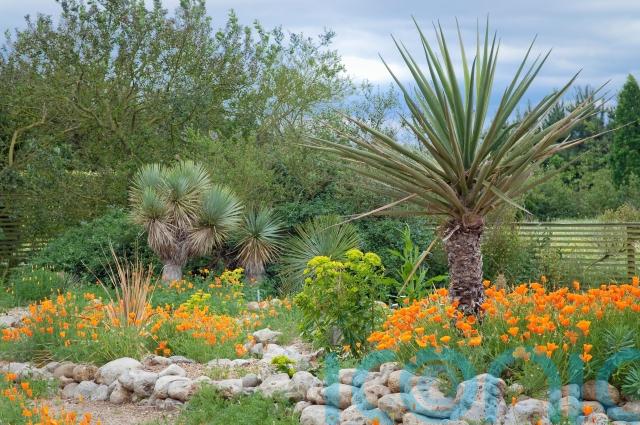
Mention palm trees and you might think of the Caribbean and other tropical holiday hotspots – but you can grow your own palm tree at home, if you choose the right type.
So says palm tree expert Chris Kidd, curator of Ventnor Botanic Garden (botanic.co.uk) on the Isle of Wight. Ventor’s Arecaceae (palm tree) collection was last year awarded National Plant Collection status by Plant Heritage (plantheritage.org.uk).
Trachycarpus
The first palms introduced to this country in the 1870s came from China and Japan and it was anticipated when they came here that they’d need hot, sunny places to thrive. But trachycarpus come from the Himalayas and can cope with cold, frost, snow and darkness, explains Kidd.
“If you live in a frost pocket, trachycarpus is the palm to have. It will withstand really cold temperatures and will grow much faster in dappled shade, where it will become more leafy.”
Chamaerops
Palms more suitable for containers
“The Jelly palm (Butia capitata) and the Canary Island date palm (Phoenix canariensis) are two good examples. After that you start to get into the exotic area where the rewards are good but the risks are high,” he says.
How fast do they grow?
“They can actually grow very fast if you put them where they’d have as much moisture as a normal garden plant and don’t treat them as if they are something that needs to be kept dry.”
What should you look for when buying?
Look for one that doesn’t look like it’s been hanging around the nursery for some time, suggests Kidd. “It should be in a nice big pot (where the palm leaves are not touching the side of the pot) that isn’t growing brambles and mare’s tails at the bottom, that makes it looks like it’s been in there a long time.
“If a plant sits there for two or three years not getting enough water, then you are buying something that’s already started to really slow down.”
You are looking for really fresh palm trees whose trunks are a light brown and the old leaves haven’t been freshly cut off. At the bottom of the pot, look for lovely fresh white roots growing, particularly early in the season.
How do you look after them?
The biggest mistake is when people become over-zealous and cut off the old leaves, he says. The leaves on palms persist for a long time and while they are green they are photosynthetic and are adding food to the plant.
“Many gardeners have the urge to get hold of the secateurs and saw and cut and prune, and can turn palms into bizarre-looking things. All the leaves which have provided the food to help it to grow have been taken away and it may assume an unpleasant horticultural shape as a result, with four or five leaves left at the top.

“Feed and water palms regularly. If you grow a palm in a pot, all the nutrients in the compost will have gone in 12 months so need to be replaced. You need a good broad fertiliser to be applied little and often, every time you water. In the summer you don’t need to water every day, but you do need to water regularly.”
It’s a good idea to change the compost every year, he suggests, at a time of year when the plant is dormant, preferably January or February.
You don’t need to protect trachycarpus or chamaerops with fleece, but less hardy palms may need bringing indoors for winter, so bear in mind the hassle of moving large varieties undercover, he adds.
Which plants make good palm partners?

“Palms are statement plants which are very architectural and will remain that way. It can lend itself to a formal situation, in groups of even numbers,” Kidd says. “They come into their own in a sub-tropical design. Trachycarpus flower in early summer, emerging a little further down as yellow rosettes. On a male plant it will look like a pineapple fruit, while on a female it will look like a big yellow bunch of grapes.”
Underplant container palms with spider plants or short-lived perennials like salvias, he suggests.
Subscribe or register today to discover more from DonegalLive.ie
Buy the e-paper of the Donegal Democrat, Donegal People's Press, Donegal Post and Inish Times here for instant access to Donegal's premier news titles.
Keep up with the latest news from Donegal with our daily newsletter featuring the most important stories of the day delivered to your inbox every evening at 5pm.